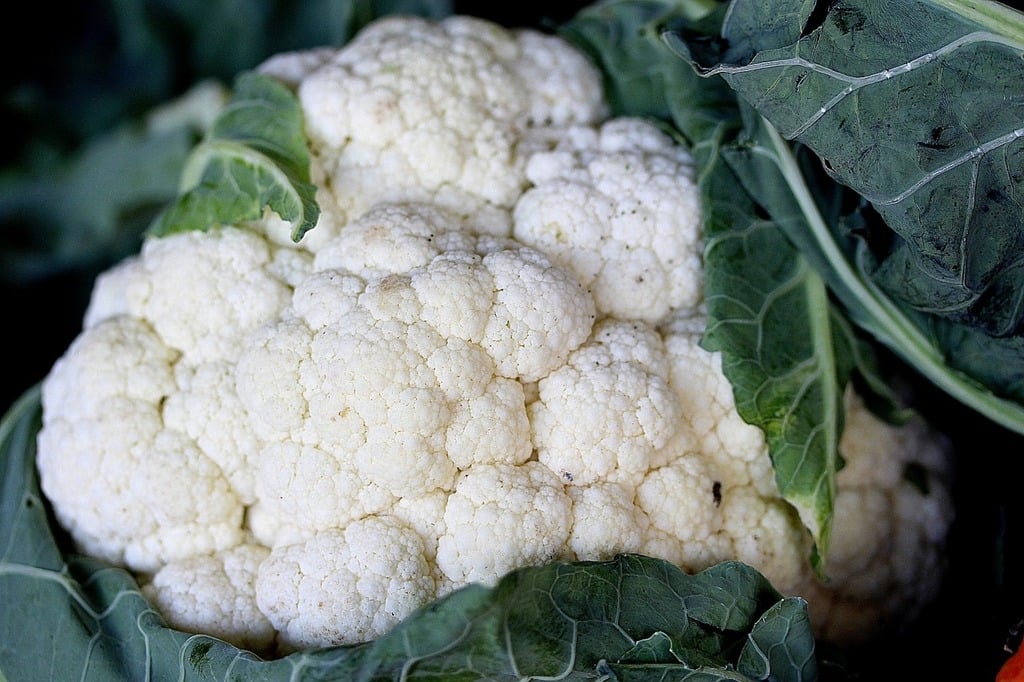
Cauliflower has gained popularity as a dish-changing ingredient, frequently replacing rice, potatoes, or pasta in various dishes. Now, you might be curious about its taste—why people find it appealing in both its raw and cooked forms. Well, explaining its taste in just one word isn’t possible. To fully understand, follow our detailed guide!
What Does Cauliflower Taste Like?
Cauliflower tastes a bit nutty and a tad sweet. It’s crispy when you bite it and goes well with different foods. Sometimes, there’s a tiny bitter taste and a sharp feeling afterward. To discover its taste in-depth, let’s investigate some of these aspects:
- Texture – Cauliflower has a crunchy texture, especially when eaten raw or lightly cooked. It can also become soft and creamy when cooked longer or mashed.
- Aroma– Aroma plays a significant role in our perception of taste. Cauliflower gives off a delicate fragrance when it’s raw or in a lightly cooked state. However, it can develop a strong and unpleasant odor when overcooked, due to the release of sulfur compounds.
- Culinary Versatility– its flavor shows remarkable versatility when it comes to cooking. It’s really good at soaking up different flavors when you cook it in various dishes. When you add mild herbs, spices, or flavorful sauces, cauliflower absorbs these flavors effectively.
- Nutritional Value – The abundance of nutrients in cauliflower contributes to its taste. For example, the presence of vitamin B can result in a slightly bitter flavor. Brimming with vitamins, minerals, and fiber, this vegetable serves as a valuable source of nourishment for your body. Incorporating cauliflower into your meals is a wise choice for self-care.
Different Types Have Different Tastes
Just like Asparagus, different types of cauliflower can have varying tastes due to genetic differences, growing conditions, and inherent characteristics. Factors such as the variety of cauliflower, soil type, climate, and cultivation methods can all influence the flavor profile. Therefore, continue reading to uncover the taste of each type below:
Classic White Cauliflower
The flavor of classic white cauliflower can vary depending on your method of consumption. When people consume it raw, it offers a crisp texture that has a sweet and nutty taste. It also has a subtle bitterness and earthy undertones. People often enjoy eating it as a raw snack in salads, dips, and slaws.
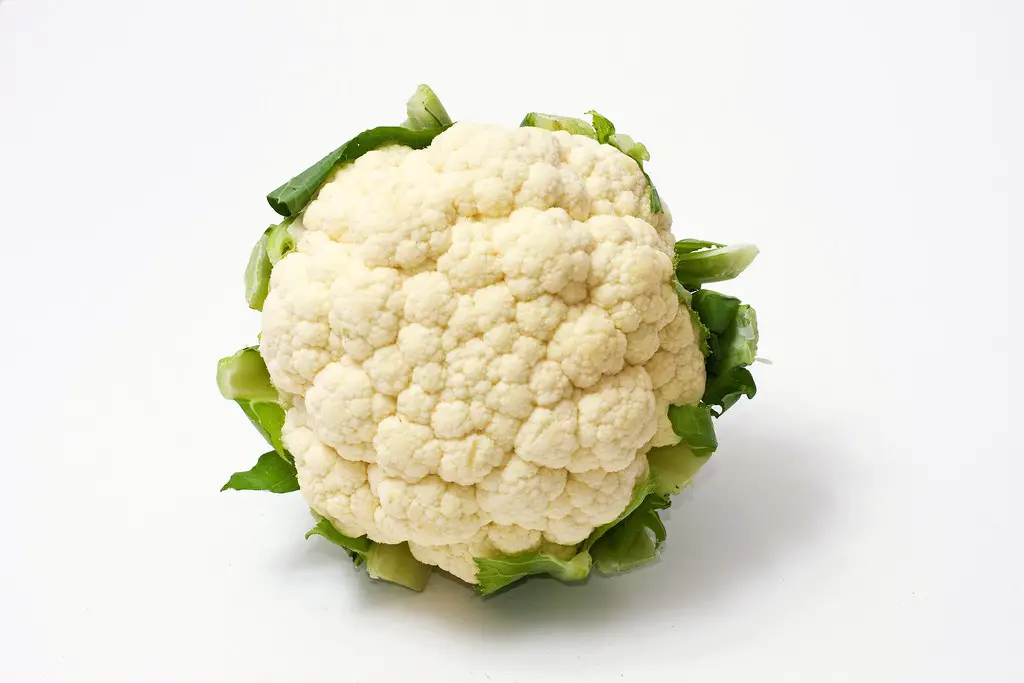
Further, White cauliflower becomes softer and more tender when it is cooked. It results in a milder and more delicate flavor profile. However, the taste changes based on how you cook it. Some people prefer boiled white cauliflower, while others opt for frying it.
Purple Cauliflower
The taste of purple cauliflower resembles that of white cauliflower but boasts unique characteristics. With a gentle, sweet, and nutty taste, it carries a touch of bitterness and earthiness. Its natural sweetness is enhanced by the anthocyanin pigment responsible for its purple color. The purple variety is generally more tender and less harsh as compared to white cauliflower.
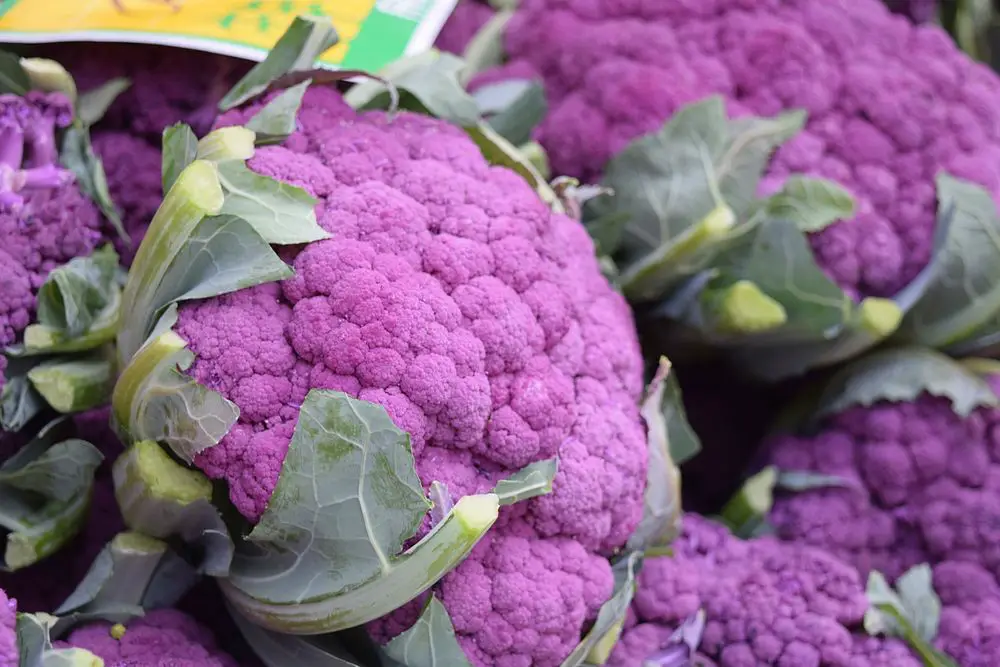
Some individuals might notice a slightly unconventional taste, which is best experienced when consumed raw or lightly cooked to prevent intensification. While boiling or steaming can lead to color loss, roasting, grilling, or sautéing better preserves its vibrant hue.
Green Cauliflower
Green Cauliflower (also called Broccoflower) shares a taste similar to white cauliflower, with slight variations. It possesses a mild, sweet, and subtly nutty flavor that doesn’t carry the bitter undertones often found in white cauliflower. When it’s cooked, the florets develop a tender and chewy texture.
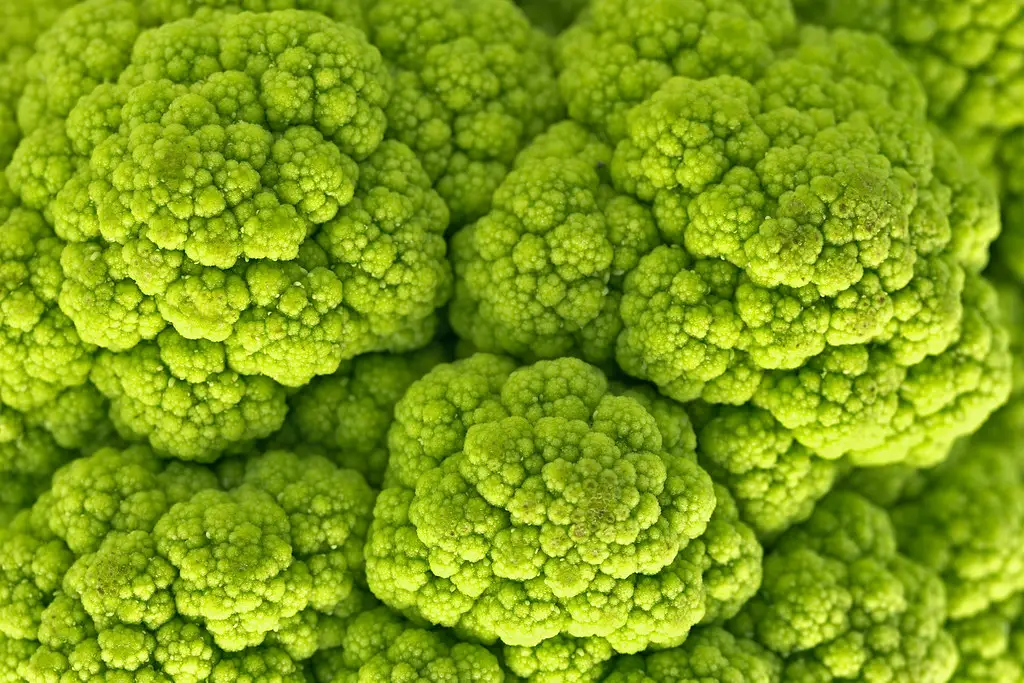
The natural sweetness is also boosted by the chlorophyll pigment responsible for its green color. Nevertheless, a slightly “grassy” taste might be noticed by some people. This makes it preferable to consume the cauliflower raw or lightly cooked, as excessive cooking can intensify the “grassy” flavor.
Orange/Yellow Cauliflower
Orange/yellow cauliflower is also known as “cheddar” cauliflower due to its cheese-like hue. Although its color evokes cheese, it does not taste cheesy. It has a mild and slightly sweet flavor that resembles its purple counterpart.
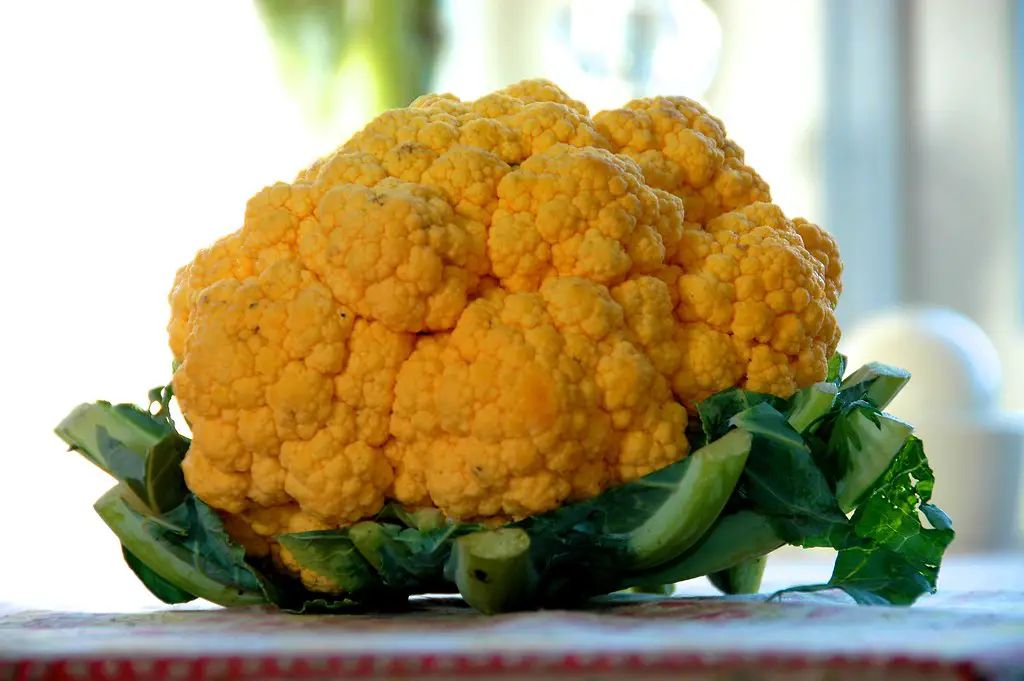
It possesses a slightly greater degree of sweetness and creaminess compared to typical cauliflower. This makes it a versatile ingredient for dishes like mashed cauliflower, sautéed potatoes, soups, and roasted preparations with pearl onions.
Suggested Reading: What Does Creme Brulee Taste Like? A French Dessert Classic
Factors Affecting the Taste of Cauliflower
After conducting thorough research, we have identified numerous factors that have the potential to impact the taste of cauliflower. However, we will outline only a select few of the significant factors below:
Growing Environment
How cauliflower tastes are influenced by the conditions in which it grows. Various factors, such as its location, exposure to sunlight, and temperature, can alter its flavor. The following is a detailed guide:
- Location’s Role: Different regions have distinct soil types, water quality, and air compositions. This will influence the nutrients cauliflower absorbs. The soil might contain more sulfur or nitrogen in certain areas contributing to a bitter or strong taste. Alternatively, higher salt or calcium content in water might yield a saltier or sweeter taste.
- Sunlight and Temperature: Sunlight is necessary for sugar production. However, excessive sunlight can introduce bitterness. Cooler temperatures suit cauliflower growth, which yields a sweeter and gentler taste. Conversely, warmer climates lead to a bitter and more pronounced taste.
- Weather’s Effect: Weather patterns alter cauliflower’s growth rate by impacting its taste. Steady and moderate growth is optimal. Extreme growth rates due to weather conditions can affect flavor and quality. For example, excessive dryness affects the sweetness and bitterness of cauliflower.
Adding Ingredients
Cauliflower’s flavor can be transformed by the ingredients you introduce. It has a remarkable ability to take on the tastes of whatever you add to it. For instance, a sprinkle of salt can enhance its overall taste, whereas the addition of various spices can introduce exciting and diverse flavors. Furthermore, experimenting with ingredients like lemon can lend it a zesty twist, and incorporating herbs can impart a delightful and savory essence.
Also, read our guide on what does a mooncake taste like.
Freshness
Freshness plays a significant role in determining the quality of flavor that cauliflower delivers. When cauliflower is fresh, it boasts a gentle nutty taste complemented by sweet hints. It offers a satisfying crunch when consumed raw and takes on a velvety texture when cooked.
Nevertheless, as cauliflower matures over time, its taste can undergo less appealing changes. For instance, yellowing or browning indicates a loss of moisture and nutrients. Soft spots and the appearance of mold indicate spoilage, resulting in a taste that’s bitter, sour, or even spoiled.
Editor’s Pick: Airlines That Provide the Best Meals: Hype Up Your Taste Buds at 30,000 Feet
Impact of Different Cooking Methods on Taste
To improve the flavor of cauliflower, people enjoy eating it after it’s been cooked. However, different cooking methods bring out unique tastes and flavors. If you’re interested in learning about how cooking techniques can impact the taste, take a look below.
Boiling
Boiling cauliflower yields a soft and easily biteable texture. However, the flavor might be milder compared to other cooking methods due to some nutrients leaching into the cooking water.
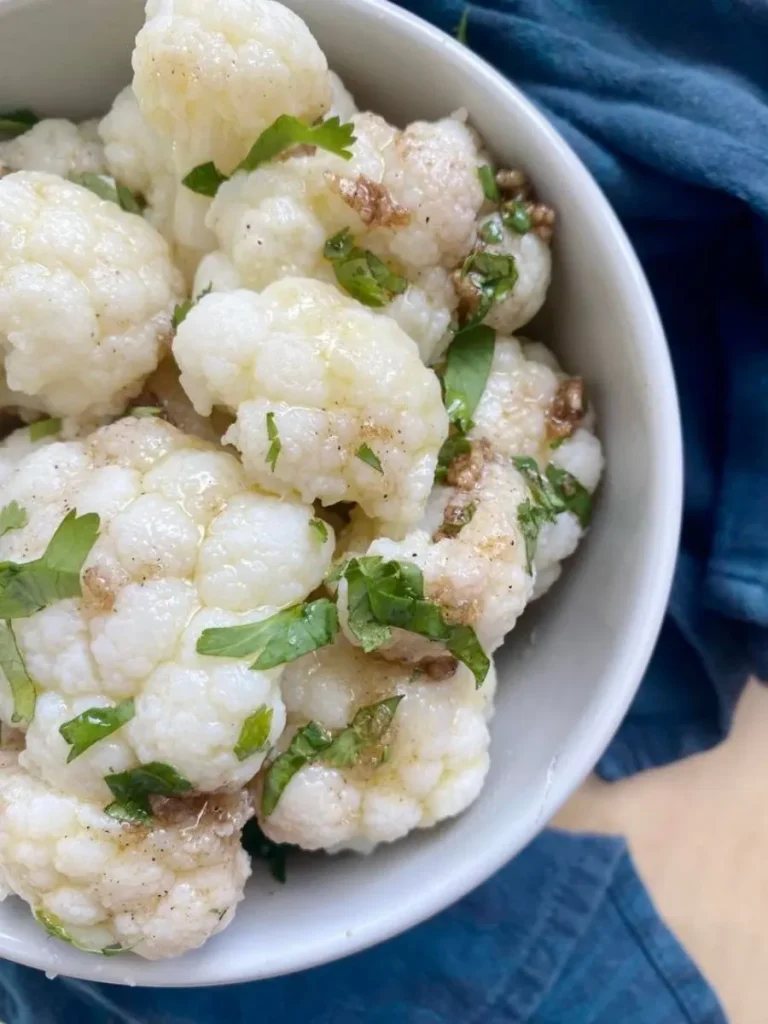
To boil cauliflower, break the head into florets and rinse them. Boil water in a pot with a pinch of salt, then add the florets. Cook for 5-7 minutes until tender. Drain and cool the florets, then toss them with butter and seasonings for added flavor.
Roasted Cauliflower
This method brings out the cauliflower’s cream of the crop attributes! It results in tender florets with a delightful mix of a tender interior, crisp edges, and caramelized flavors.
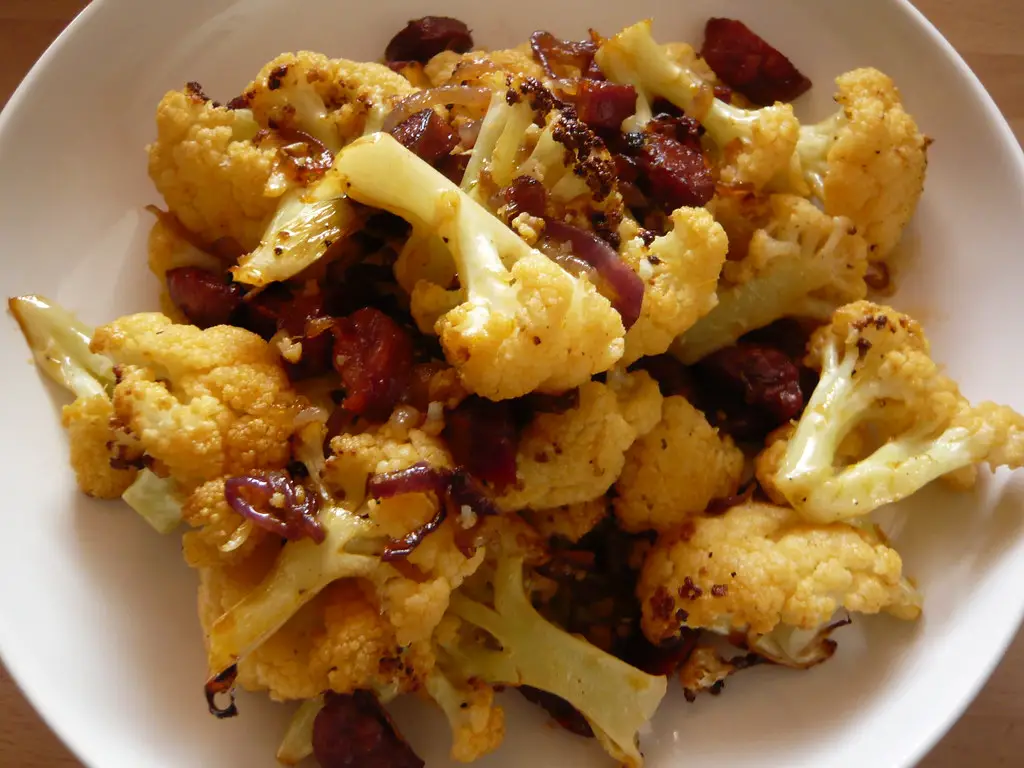
Set the oven to 400°F, and arrange the cauliflower florets on a baking sheet. Then, drizzle them with olive oil and your chosen seasoning. Now, roast for around 20 minutes or until they turn golden brown and tender.
Steamed Cauliflower
The taste of steamed cauliflower might be bland on its own. However, when seasoned with butter (or olive oil), salt, and pepper, it becomes tender, savory, and almost melt-in-your-mouth.
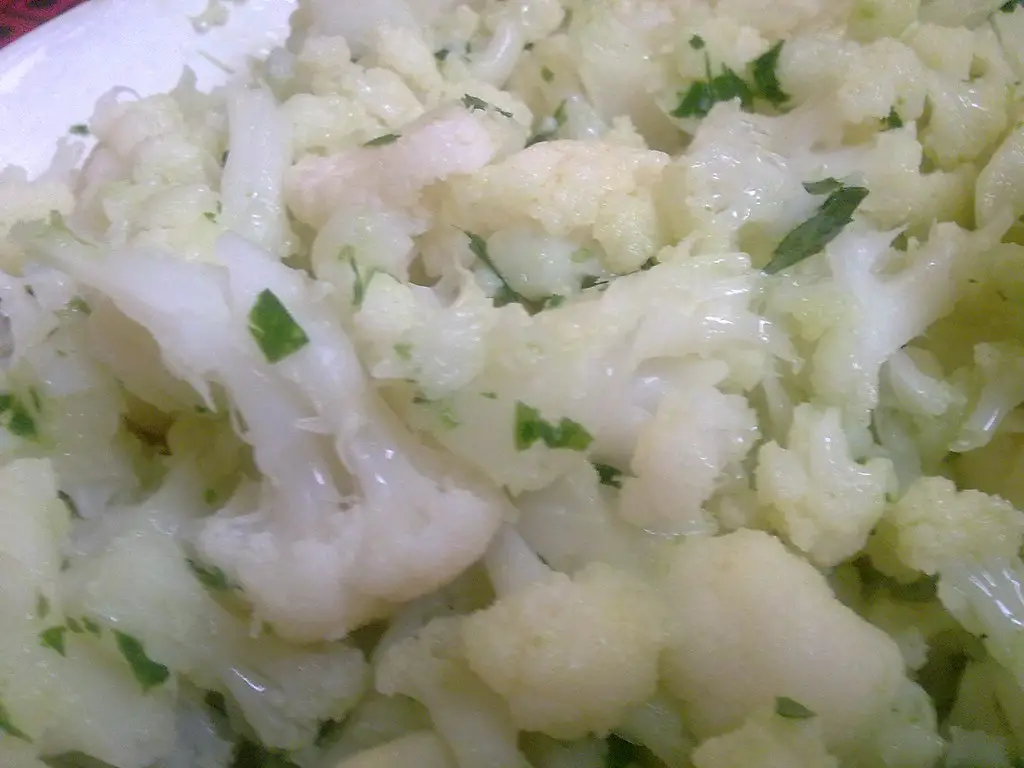
For steaming, cut the cauliflower into florets and place them in a microwave-safe dish. Add approximately 1 inch of water, cover with plastic wrap, and steam for about 4 minutes or until tender.
Conclusion
A cauliflower’s taste journey is like a flavorful adventure! Different types, from classic white to vibrant purple or green, offer nuanced variations in taste. However, beware the dreaded overcooking, which can unleash an unpleasant sulfuric aroma. Remember, freshness is key, and how you cook it matters—roasting brings out its best. So, whether you’re a cauliflower connoisseur or a newbie, dive into this culinary playground and let your taste buds flourish!
What Does Cauliflower Taste Like?- FAQs
Yes, you can! Raw cauliflower is crunchy and has a mild, slightly sweet flavor. It’s perfect for salads, veggie platters, or as a healthy snack with dips.
Cauliflower can taste bitter due to factors like overcooking or high sulfur content in the soil where it was grown. Be mindful of cooking methods to avoid bitterness.
To keep cauliflower fresh, store it in a perforated plastic bag in the refrigerator’s vegetable crisper. This helps maintain humidity while allowing airflow, preventing moisture buildup that can lead to spoilage. Consume it within a week for the best flavor.
![What To Wear To a Drag Show? [HOTTEST Outfit Ideas]](https://hopdes.com/wp-content/uploads/2024/01/What-to-wear-to-a-Drag-Show-390x220.jpg)



![What to Wear to an Outdoor Concert? [Cute Outfit Ideas]](https://hopdes.com/wp-content/uploads/2023/11/What-to-Wear-to-an-Outdoor-Concert-Cute-Outfit-Ideas-390x220.jpg)
